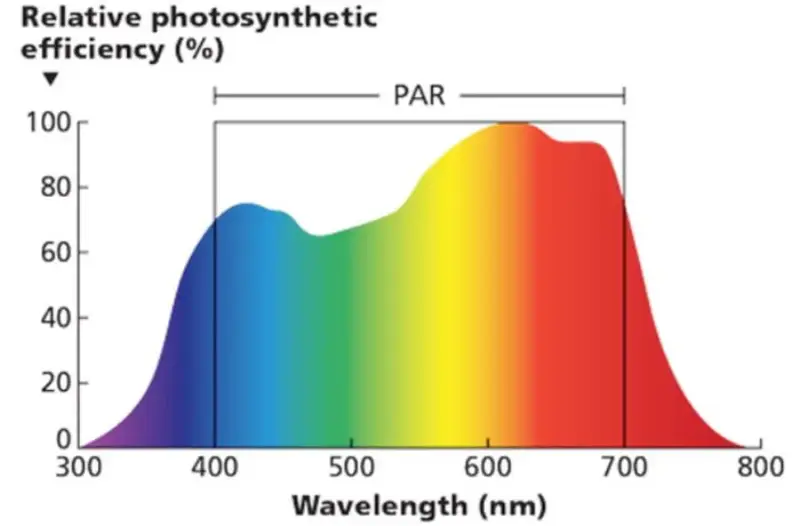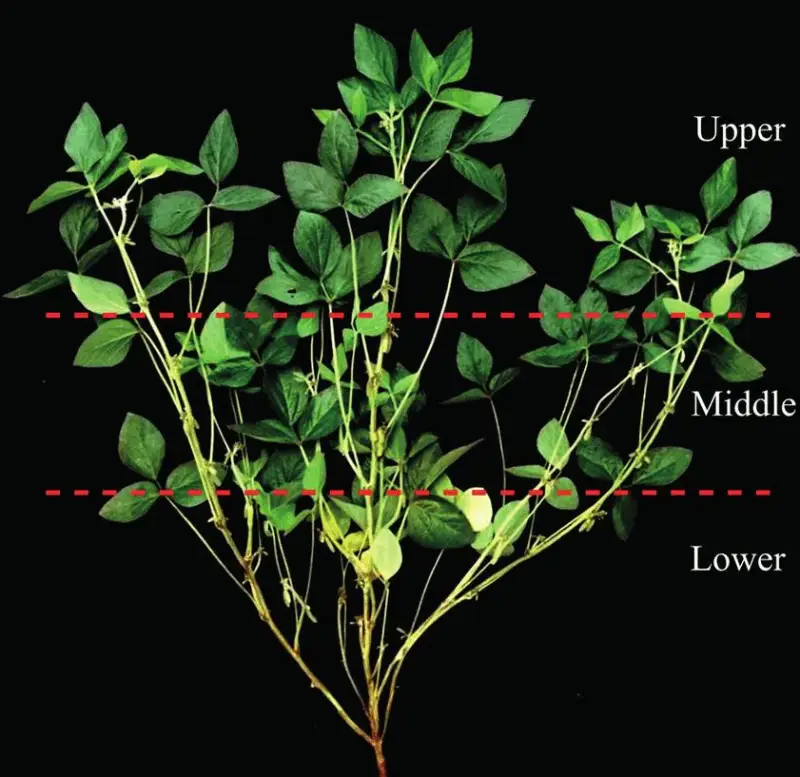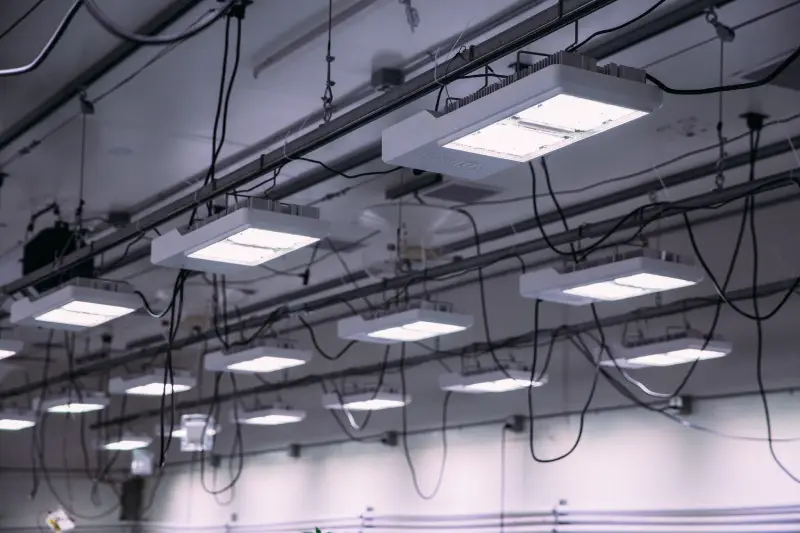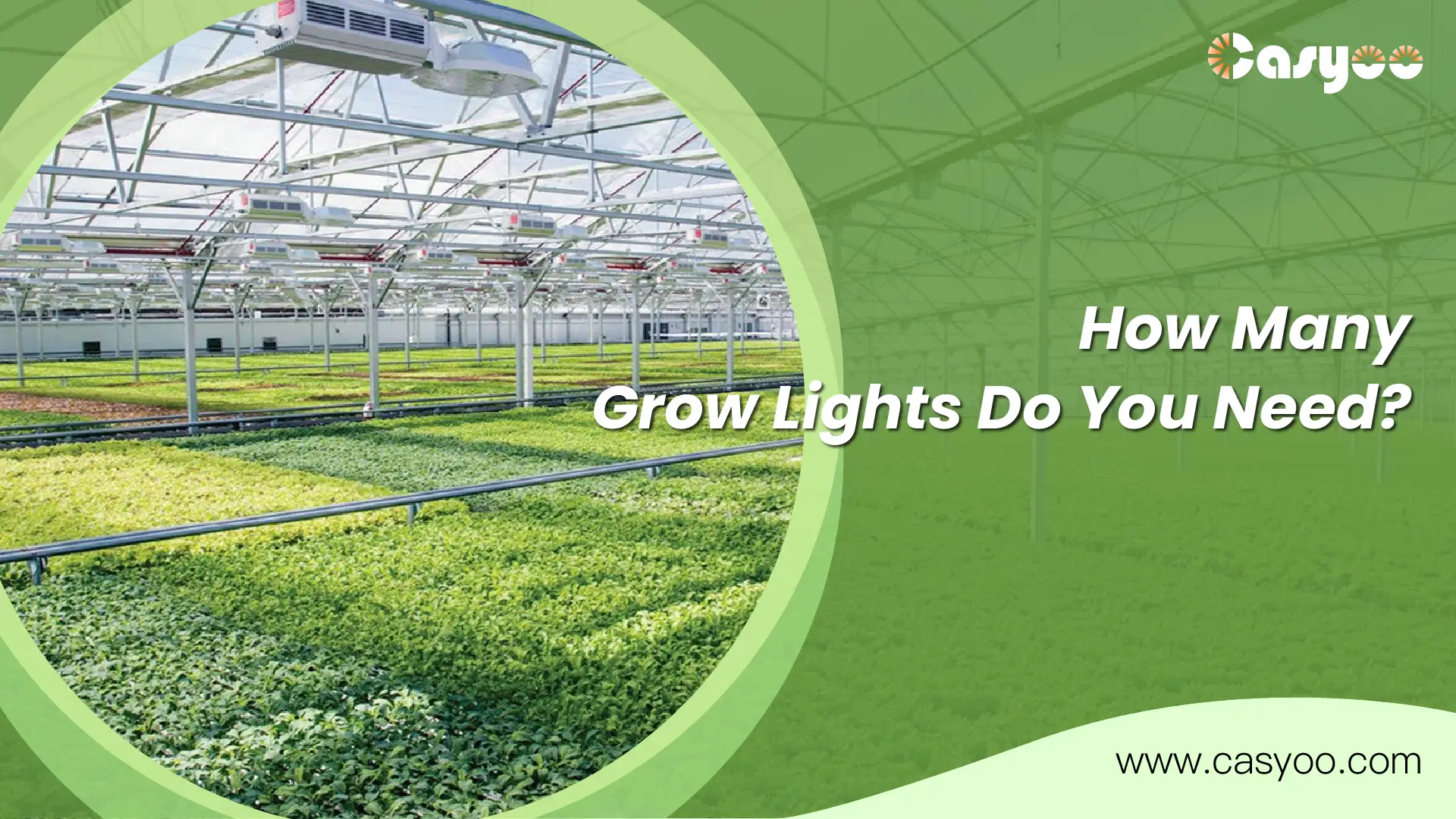How many grow lights do you need for your plants? Any grower will face this question, and it is very necessary to know before setting up your grow room or grow tent. This article will tell you the answer, keep reading!
Know your plants first
Before calculating how many grow lights you need, you need to understand your crop types and their light needs. There are two things you need to know. The first is the PAR your crops require, and the second is the canopy coverage. We will go into detail about both so that you can easily understand your plants.
PAR Requirements of Plants

Too strong and too weak light will damage the health of your plants.
- Too Low PAR: If plants cannot get enough light, then they cannot produce enough energy to thrive, and the quality and yield of the plants may not be as expected. Not to mention, you cannot get the taste and aroma you want from your crops.
- Too High PAR: Too high light intensity is also harmful to plants, which can burn your plants and even be a fire hazard.
Therefore, you need to provide the best PAR for your plants. For example, leafy greens such as lettuce need a PAR of about 200. Flowering and fruiting plants require more intense light, usually a PAR of 400-500. Once you figure out the PAR your plants need, it will be much easier to find the right light for your grow room.
Determine Canopy Coverage

Beginners often get confused after hearing the word “canopy”. The canopy is the part of the plant that absorbs light. It can be the very top and bottom that receives light.
1. Measure the length and width of the canopy
This is what you need to measure when considering the number of grow lights. Measuring the entire grow space will prevent you from accurately estimating the light your plants will need because some of the space in your grow area is wasted. There is no need to consider the area of the entire growing space because there are no plants in that area.
2. Measure the depth of the canopy
Depth is also an important factor. Lights that are strong enough to reach deep into the plants. Just covering the top of the plants is not enough.
How to calculate the number of lights your plants need?

After knowing the PAR value and canopy coverage, you can calculate the number of indoor LED grow lights your plants need.
Here are some steps for your reference.
Step 1:Research the PAR requirements of your crops
Are you growing tomatoes, cucumbers, or peppers? Whatever you plan to grow will have specific PAR requirements, and the easiest way to find out about plant PAR is to search on Google, where you will get exact PAR values for different growth stages.
Remember: the outer edges of a grow light’s coverage area will have weaker light intensity. If you are only using one light, keep in mind that the outer part of the canopy will have weaker light intensity. Depending on the type of plant, you may need to invest in multiple lights to ensure that the entire canopy receives strong light.
Step 2:Measure the potential size of your canopy.
Measure the exact length, width, and height of the canopy, you will better know the appropriate grow light coverage and intensity.
Your plants will take up some space in your growing area. You need to avoid crowding your plants together. Make sure your plants have enough space so that they can grow in a comfortable manner. If you have limited growing space but you want to grow large crops, you may only fit 1 or 2 crops. If you are growing small plants, then you can fit more plants in the same small grow space. In either case, make sure they have enough room for fully developed plants.
Step 3:Choose grow lights based on the coverage and intensity you need for your canopy.
If you are using multiple lights, consider your grow light positioning. If you need to evenly cover the entire canopy, aligning multiple lights will create a third strong light spot by overlapping the light coverage at the edges of each grow light. This way, you will get 2 or more strong light spots from the center of the light coverage, as well as strong light in places where the intensity would normally wane.
Conclusion
In conclusion, determining how many LED grow lights to use in your growing space requires careful consideration of factors such as plant light intensity requirements, canopy coverage, and more. By following the steps above, you will be able to accurately calculate the number of grow lights you need. We have a variety of grow lights to choose from. If you have any questions, you can always contact us!




